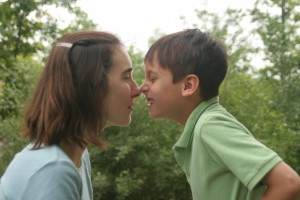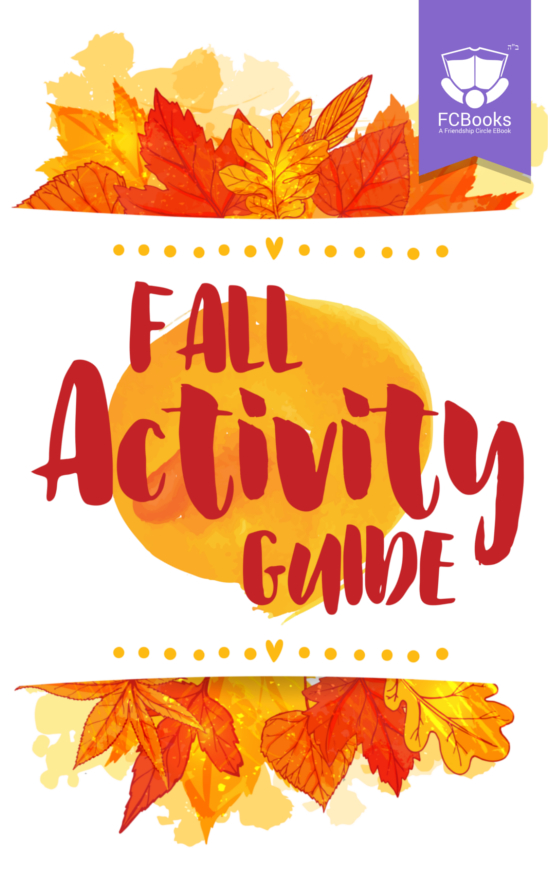
Resources, Special Education  One of my happiest days in 2011 was the day I met the new social worker at my son’s school.
I went into the meeting with two questions:
1. Have you ever heard of a type of peer-led Person-Centered Planning called Circle of Friends?
2. How can I implement a Circle of Friends for my son, either formally through my son’s IEP or informally with the school’s permission to contact peers?
I had read about this type of planning years earlier, but I lost the original article. I couldn’t find any more information about it, and none of my son’s team members at his previous school knew what it was. So imagine my surprise when the social worker started explaining her role on my son’s team: her primary function is to initiate and facilitate a Circle of Friends, which would be written into the IEP. My face lit up, and I burst out: “You just made my day!”
The Basics of Person-Centered Planning
Person-Centered Planning (PCP) is a process that helps a focus person to do the following:
One of my happiest days in 2011 was the day I met the new social worker at my son’s school.
I went into the meeting with two questions:
1. Have you ever heard of a type of peer-led Person-Centered Planning called Circle of Friends?
2. How can I implement a Circle of Friends for my son, either formally through my son’s IEP or informally with the school’s permission to contact peers?
I had read about this type of planning years earlier, but I lost the original article. I couldn’t find any more information about it, and none of my son’s team members at his previous school knew what it was. So imagine my surprise when the social worker started explaining her role on my son’s team: her primary function is to initiate and facilitate a Circle of Friends, which would be written into the IEP. My face lit up, and I burst out: “You just made my day!”
The Basics of Person-Centered Planning
Person-Centered Planning (PCP) is a process that helps a focus person to do the following:
 , Laurie LeComer writes, “A socially included child will be a more successful child. Each and every outing and new social experience will give your child the practice and the familiarity needed to learn to cope with and function within the different work and leisure environments he or she may need to move through more independently as a teen or an adult.” This is exactly why a Circle of Friends can be a pivotal piece of a child’s education. Today I want to explain how to set up a Circle of Friends:
1. Permissions
If the focus person is a child, then the child’s parents must give permission for the process. If any of the activities will take place on school property, then the school administrators must also give permission.
[caption id="attachment_5567" align="alignright" width="210" caption="Circles of Support"]
, Laurie LeComer writes, “A socially included child will be a more successful child. Each and every outing and new social experience will give your child the practice and the familiarity needed to learn to cope with and function within the different work and leisure environments he or she may need to move through more independently as a teen or an adult.” This is exactly why a Circle of Friends can be a pivotal piece of a child’s education. Today I want to explain how to set up a Circle of Friends:
1. Permissions
If the focus person is a child, then the child’s parents must give permission for the process. If any of the activities will take place on school property, then the school administrators must also give permission.
[caption id="attachment_5567" align="alignright" width="210" caption="Circles of Support"] [/caption]
2. Rings of support
The focus person draws a picture of his or her circles of support, beginning with him or herself. The focus person is the center circle.
The first ring around the circle includes the people closest to the focus person, usually parents and siblings.
The second ring includes friends who care about the focus person and want to be involved in the process.
The third ring includes the professionals who help with medical, therapeutic and educational needs and those who facilitate the planning process.
3. The Facilitator
The facilitator gives a short presentation about the focus person’s needs to the group of friends. This may mean the focus person’s classmates at school or a different set of peers, depending on the situation. The presentation may be done in the presence of the focus person, or with the focus person absent if that makes the focus person more comfortable.
I donated a copy of “The Autism Acceptance Book
[/caption]
2. Rings of support
The focus person draws a picture of his or her circles of support, beginning with him or herself. The focus person is the center circle.
The first ring around the circle includes the people closest to the focus person, usually parents and siblings.
The second ring includes friends who care about the focus person and want to be involved in the process.
The third ring includes the professionals who help with medical, therapeutic and educational needs and those who facilitate the planning process.
3. The Facilitator
The facilitator gives a short presentation about the focus person’s needs to the group of friends. This may mean the focus person’s classmates at school or a different set of peers, depending on the situation. The presentation may be done in the presence of the focus person, or with the focus person absent if that makes the focus person more comfortable.
I donated a copy of “The Autism Acceptance Book ” by Ellen Sabin to my son’s class before the presentation, and the social worker showed them the video, “A is for Autism, F is for Friend.” Outside of a school setting, parents can be the facilitators by sending out a letter inviting peers to a meeting and doing the presentation at their home.
4. Volunteers
At the end of the presentation, the peers are invited to volunteer to be in the Circle of Friends for the focus person. My son’s school limits the circle to 6 students, and my son’s circle has a waiting list.
5. Explaining the Circle
The facilitator meets with the focus person privately to discuss the circle’s purpose, function and schedule.
6. Regular Meetings
The circle must commit to meet on a regular basis over a period of 1 year, with the hope that peers will choose to remain in the circle for several years. At weekly meetings, the circle identifies areas in which the focus person needs assistance, develops creative strategies and learns how to interact effectively with the focus person.
This is the beauty of the Circle of Friends: the younger the group is, the more creative they are. They may suggest activities or companionship during recess, line-ups or after school. They may suggest ways to teach social skills or recommend a group that will welcome the focus person (such as a pottery class or chess club) or identify ways to make the friendship reciprocal: “Louie can help me with my spelling, and I can help him with math!”
It is also cost-effective for schools, because the facilitator is only needed for 30 minutes per week, and the peers apply their strategies for the rest of the week. It’s a pro-active way to prevent bullying and build a sense of community in the school.
” by Ellen Sabin to my son’s class before the presentation, and the social worker showed them the video, “A is for Autism, F is for Friend.” Outside of a school setting, parents can be the facilitators by sending out a letter inviting peers to a meeting and doing the presentation at their home.
4. Volunteers
At the end of the presentation, the peers are invited to volunteer to be in the Circle of Friends for the focus person. My son’s school limits the circle to 6 students, and my son’s circle has a waiting list.
5. Explaining the Circle
The facilitator meets with the focus person privately to discuss the circle’s purpose, function and schedule.
6. Regular Meetings
The circle must commit to meet on a regular basis over a period of 1 year, with the hope that peers will choose to remain in the circle for several years. At weekly meetings, the circle identifies areas in which the focus person needs assistance, develops creative strategies and learns how to interact effectively with the focus person.
This is the beauty of the Circle of Friends: the younger the group is, the more creative they are. They may suggest activities or companionship during recess, line-ups or after school. They may suggest ways to teach social skills or recommend a group that will welcome the focus person (such as a pottery class or chess club) or identify ways to make the friendship reciprocal: “Louie can help me with my spelling, and I can help him with math!”
It is also cost-effective for schools, because the facilitator is only needed for 30 minutes per week, and the peers apply their strategies for the rest of the week. It’s a pro-active way to prevent bullying and build a sense of community in the school.
Circle of Friends: A Type of Person-Centered Planning
 One of my happiest days in 2011 was the day I met the new social worker at my son’s school.
I went into the meeting with two questions:
1. Have you ever heard of a type of peer-led Person-Centered Planning called Circle of Friends?
2. How can I implement a Circle of Friends for my son, either formally through my son’s IEP or informally with the school’s permission to contact peers?
I had read about this type of planning years earlier, but I lost the original article. I couldn’t find any more information about it, and none of my son’s team members at his previous school knew what it was. So imagine my surprise when the social worker started explaining her role on my son’s team: her primary function is to initiate and facilitate a Circle of Friends, which would be written into the IEP. My face lit up, and I burst out: “You just made my day!”
The Basics of Person-Centered Planning
Person-Centered Planning (PCP) is a process that helps a focus person to do the following:
One of my happiest days in 2011 was the day I met the new social worker at my son’s school.
I went into the meeting with two questions:
1. Have you ever heard of a type of peer-led Person-Centered Planning called Circle of Friends?
2. How can I implement a Circle of Friends for my son, either formally through my son’s IEP or informally with the school’s permission to contact peers?
I had read about this type of planning years earlier, but I lost the original article. I couldn’t find any more information about it, and none of my son’s team members at his previous school knew what it was. So imagine my surprise when the social worker started explaining her role on my son’s team: her primary function is to initiate and facilitate a Circle of Friends, which would be written into the IEP. My face lit up, and I burst out: “You just made my day!”
The Basics of Person-Centered Planning
Person-Centered Planning (PCP) is a process that helps a focus person to do the following:
- Gain control over his or her life
- Develop relationships, skills and community involvement
- Identify interests and personal goals
- Create a plan to turns those personal dreams into reality
Circle of Friends
In her book The Socially Included Child [/caption]
2. Rings of support
The focus person draws a picture of his or her circles of support, beginning with him or herself. The focus person is the center circle.
The first ring around the circle includes the people closest to the focus person, usually parents and siblings.
The second ring includes friends who care about the focus person and want to be involved in the process.
The third ring includes the professionals who help with medical, therapeutic and educational needs and those who facilitate the planning process.
3. The Facilitator
The facilitator gives a short presentation about the focus person’s needs to the group of friends. This may mean the focus person’s classmates at school or a different set of peers, depending on the situation. The presentation may be done in the presence of the focus person, or with the focus person absent if that makes the focus person more comfortable.
I donated a copy of “The Autism Acceptance Book
[/caption]
2. Rings of support
The focus person draws a picture of his or her circles of support, beginning with him or herself. The focus person is the center circle.
The first ring around the circle includes the people closest to the focus person, usually parents and siblings.
The second ring includes friends who care about the focus person and want to be involved in the process.
The third ring includes the professionals who help with medical, therapeutic and educational needs and those who facilitate the planning process.
3. The Facilitator
The facilitator gives a short presentation about the focus person’s needs to the group of friends. This may mean the focus person’s classmates at school or a different set of peers, depending on the situation. The presentation may be done in the presence of the focus person, or with the focus person absent if that makes the focus person more comfortable.
I donated a copy of “The Autism Acceptance Book


